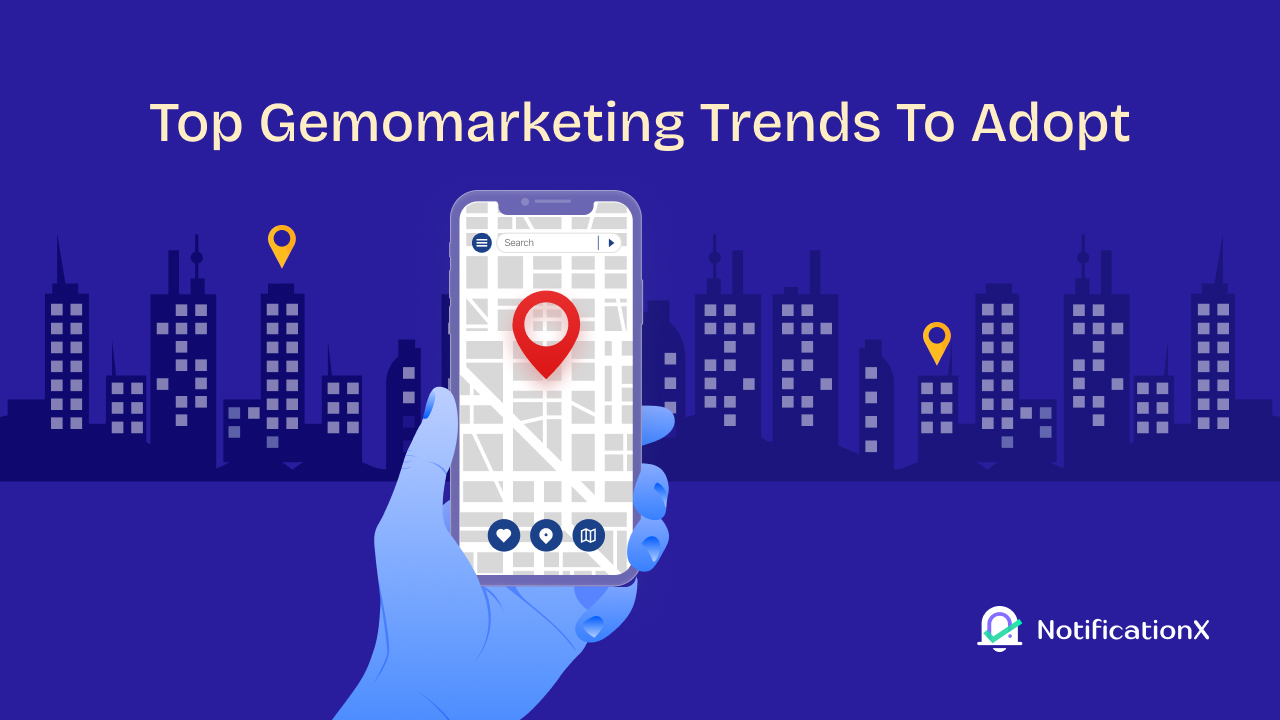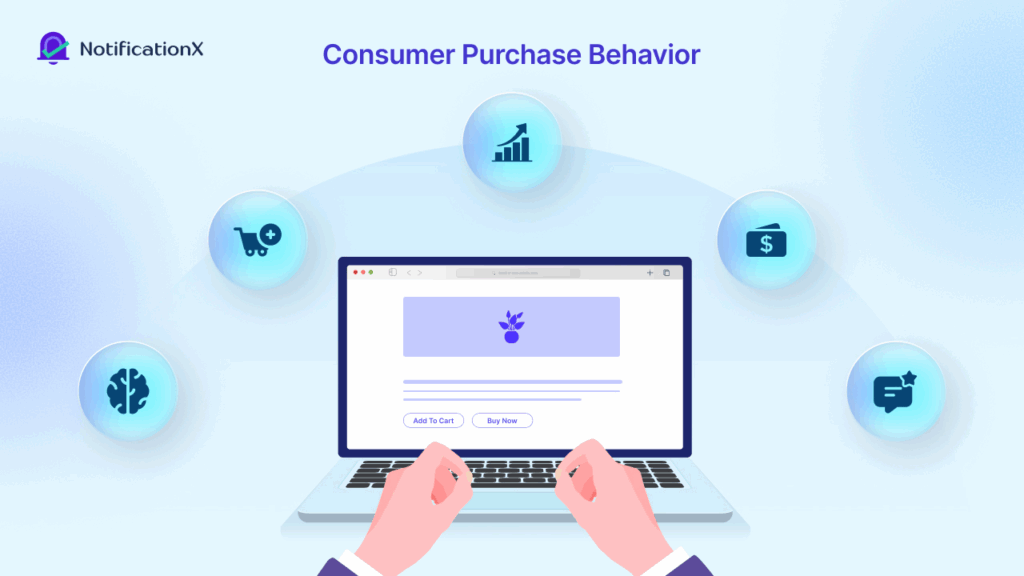Are you having trouble connecting with customers in a meaningful and personal way? Due to the quantity of messages flooding their inboxes and phones, traditional marketing methods often fail to reach customers. To solve this problem, geomarketing can deliver timely, targeted messages to customers based on their location.
As mobile technology, artificial intelligence, and the Internet of Things (IoT) advance, geomarketing will become even more precise and intelligent by 2025, offering consumers an even more personalized experience.

As we look ahead to 2025, we will explore how businesses can stay competitive and strengthen their customer relationships by leveraging geomarketing strategies with modern trends..
1. The Role of Artificial Intelligence (AI) And Machine Learning in Geomarketing
The use of Artificial Intelligence (AI) and Machine Learning is revolutionizing location-based marketing by allowing businesses to offer personalized service. Through the analysis of real-time location data, these technologies improve customer engagement and conversion, making marketing smarter and more efficient.
Geomarketing with AI
Marketers are already using artificial intelligence (AI) and machine learning to transform their marketing strategies. Businesses that want to offer personalized and context-aware marketing will have to adopt these technologies by 2025. With artificial intelligence, businesses are able to forecast consumer behavior and send targeted messages based on the location and intent of their customers in real time.
Using AI, if you know a customer is nearby, it can predict what they might want to buy based on previous purchases in that particular location or the area and the time of day. As a result, you will be able to send them personalized offers at just the right time.
For example, a fashion clothing store can track customer locations through mobile apps (with permission) and send push notifications to their phones when they’re nearby, informing them of special offers or new collections available in-store.
The Use of AI and Machine Learning in Personalization 👇
- You can send timely, relevant messages by analyzing location data from mobile devices using artificial intelligence.
- Analyze the location and shopping history of customers in order to predict which products or which type of shops they might be interested in.
- Take customer preferences, location, and previous purchases on that particular branch into consideration when making offers.
2. Augmented Reality (AR): Making Shopping More Interactive
Through augmented reality, customers are interacting virtually with products while shopping. Shopping becomes more fun and confident when they can see how items look in real-time.
AR: A New Way to Engage Customers
Augmented Reality (AR) uses digital information to overlay the real world with virtual information. By enhancing in-store experiences through AR, location-based marketing can enhance customers’ in-store experiences. You can, for example, try clothes on virtually or see how furniture would look in your house before you buy it on your phone.
AR in Outdoor Advertising
AR is not just for stores. A large number of outdoor advertising campaigns use it. AR could, for instance, transform a billboard into a 3D model of a product, allowing customers to scan the board with their phones to unlock exclusive offers.
How to Implement AR in Marketing 👇
- Provide customers with interactive AR experiences that allow them to try on clothes, look at home decor and interact with products virtually.
- You can use AR to improve in-store navigation and make finding specific products easier for your customers.
- Make outdoor advertising more engaging by integrating AR, where customers can interact with billboards or posters.
3. Context-Aware Marketing: Going Beyond Location
A context-aware marketing strategy goes beyond location to provide a personalized experience for the customer, one of the common types of location-based marketing. A brand can make timely campaigns that truly connect with customers by using data such as browsing habits and behavior.

What Is Context-Aware Marketing?
Unlike geomarketing, context-aware marketing considers the consumer’s behavior, environment, and even time of day when determining where they are physically located. It will be easier for businesses to send relevant and timely messages by leveraging more contextual data.
For example, if a customer is nearby and it is a rainy day, a store might send him a message offering discounts on umbrellas. By using this type of marketing, you can ensure that your messages are highly relevant to what the customer needs at the time.
How to Make Marketing More Context-Aware 👇
- Take into account other factors such as weather, time of day, and local events when analyzing location data.
- When customers are near a specific product, use IoT data to send an offer for coffee when they are near a coffee shop.
- Marketing messages should only be sent when they are relevant to a customer’s current situation, so as not to overwhelm them.
4. Hyperlocal Advertising: Targeting the Smallest Geographical Areas
Small, local areas, such as neighborhoods or individual buildings, are targeted with hyperlocal advertising. The use of location-based technology enables businesses to connect with local communities and increase engagement.
The Power of Hyperlocal Advertising
In hyperlocal advertising, you target very specific areas, such as blocks, neighborhoods, or even buildings. Geolocation technologies allow businesses to deliver advertisements and promotions to nearby customers.
An advertisement for a special lunchtime deal to people within five minutes’ walking distance of the restaurant would ensure it reaches customers at the right time.
How to Implement Hyperlocal Advertising 👇
- Utilize location data to target consumers near a specific street, building, or attraction.
- Promote community-based shopping by collaborating with nearby businesses.
- Optimize campaigns based on microtrends in certain geographic areas using data analytics.
5. Voice Search And Location-Based Search Optimization
Search engines are changing the way people search online, thanks to voice search and geo-location search. Users can find information using voice search, while businesses can appear in local searches through location-based search. In order to improve visibility and reach the right audience, both are essential.
Voice Search: A Growing Trend in Location-Based Marketing
Voice search can now play an important role in geomarketing with the increasing popularity of voice assistants like Siri, Alexa, and Google Assistant. Many consumers use voice commands to locate local businesses, such as finding the closest coffee shop or the best restaurant.
Voice Search Optimization
The key to being found through voice search is to make sure your website and online presence are optimized. Focus on local search terms and use conversational keywords.
How to Optimize for Voice Search 👇
- Ensure your business information is up-to-date and easy to find in voice search results by focusing on local SEO.
- To make your location and offerings more search engine friendly, use structured data markup.
- Review platforms like Google My Business will increase your visibility in voice searches if customers leave reviews.
6. Privacy And Data Security in Location Based Marketing: Building Consumer Trust
Privacy and data security are key to building trust in geomarketing. By protecting customer information, businesses can strengthen relationships and ensure a safe experience for consumers.

Why Privacy Matters in Geomarketing
Geomarketing is becoming increasingly popular, posing a threat to consumer privacy. It will be necessary for businesses to be transparent about how they collect, store, and use customer data by 2025. Success will depend on building trust with consumers.
Keeping Consumer Information Confidential and Gaining Their Trust
Transparency about data collection practices and customer control over their data are essential to maintaining consumer trust. In addition, businesses must comply with privacy regulations like GDPR and CCPA in order to ensure their data is handled responsibly.
How to Respect Privacy And Build Trust 👇
- Provide customers with the option to opt in or out of location-based services by being transparent about how you collect and use their location data.
- Maintain legal and ethical marketing practices by complying with data protection laws.
- Make sharing location data worth the customer’s time by offering discounts and rewards.
7. Seamless Integration of Digital And Physical Experiences
The world’s interactions are changing as a result of the seamless integration of digital and physical experiences. Technology is being used by businesses to improve customer experiences in real-life settings and to create new opportunities for innovation.
The Need for Omnichannel Marketing
As we move toward 2025, businesses must focus on creating seamless experiences across digital and physical channels. A consistent, personalized customer experience can be delivered no matter where a brand engages with customers through location-based marketing.
For example, a sportsware brand sent a special offer to the customer’s phone when the customer is near the store. Later, whenever the customer visits their website, they can see the same personalised offer with location-specific product availability. Through this, they see the offer, purchase from online and pick it up in store.
How to Integrate Digital And Physical Marketing 👇
- Establish an omnichannel strategy that connects your physical store, website, mobile app, and social media.
- Make online shopping and in-store shopping seamless by using location data.
- Maintain consistency and relevance across all channels to ensure a unified customer experience.
Embrace the Future of Geomarketing to Grow More
Geomarketing offers businesses endless opportunities to connect with customers. Brands can engage customers and convert them by leveraging modern technologies, including AI, machine learning, geofencing, augmented reality, and more. In order to build trust, it is imperative that these evolving strategies are adopted while ensuring privacy and data security.
Hope you understand what location based marketing is & the different types of it. Interested in more marketing tips and tricks? আমাদের ব্লগে সদস্যতা. Be sure to join our ফেসবুক community and share your thoughts there as well.




